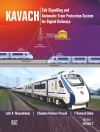For nearly half of the nation’s history, the steam locomotive was the outstanding symbol for progress and power. It was the literal engine of the Industrial Revolution, and it played an instrumental role in putting the United States on the world stage. While the steam locomotive’s basic principle of operation is simple, designers and engineers honed these concepts into 100-mph passenger trains and 600-ton behemoths capable of hauling mile-long freight at incredible speeds. American Steam Locomotives is a thorough and engaging history of the invention that captured public imagination like no other, and the people who brought it to life.
Tabela de Conteúdo
1. High-Wheeled Racers
2. More Wheels and Bigger Fireboxes
3. Vehicular Design for Horsepower
4. Big Wheels Turnin’: A History of Counterbalancing
5. Innovation and Risk in Design: From Compound Cylinders to Superheating
6. Superheating: Design and Risk
7. Francis Cole and his Triumph of Empiracl Science
8. Locomotive Safety Regulation: The Locomotive Inspection Act of 1911 and the Nationwide Shopmen’s Strike of 1922
9. Leadership in Industrial Research
10. Federal Takeover: Engineering and Politics -The U.S. Railroad Administration, 1917-1920
11. The Formative Contest
12. The Steam Locomotive’s Final Form – The Hudson
13. The Steam Locomotive’s Final Form – The Texas
14. The Steam Locomotive’s Final Form – The Hudson – Part 2
15. The Steam Locomotive’s Final Form – The Northern
16. Giants in the Earth
17. Counterpoint: Why the Diesel?
18. ‘Big Boy’ and Allegheny: The Most Powerful of All
19. The T1 and Poppet Valves: The Last Important Innovation
20. The ‘Big Three’ of the Norfolk & Western
21. Resisting the Revolution
22. Industrial Beauty and the Beholder
Sobre o autor
William L. Withuhn (1941–2017) was the long-time transportation curator at the Smithsonian Institution’s National Museum of American History. He was a licensed locomotive engineer who ran dozens of steam engines, from saddle-tankers to Northerns. Withuhn was also the chairman of the Federal Railroad Administration’s Engineering Standards Committee, which re-wrote regulations for the 21st century and thus helped ensure continued operation of heritage locomotives. He was author of The Spirit of Steam and Rails Across America.












